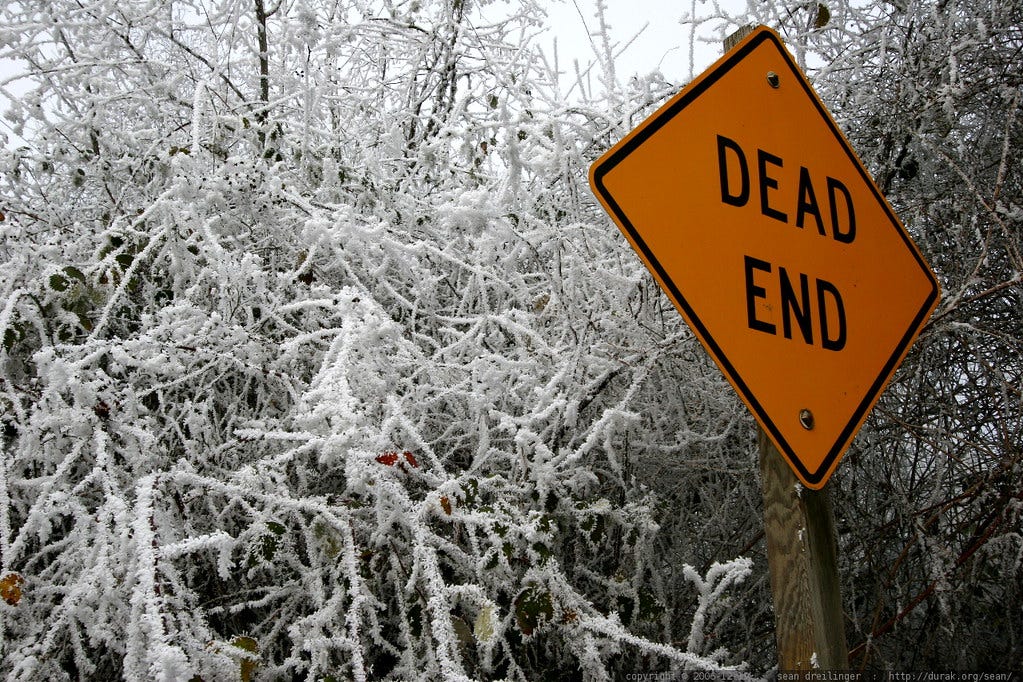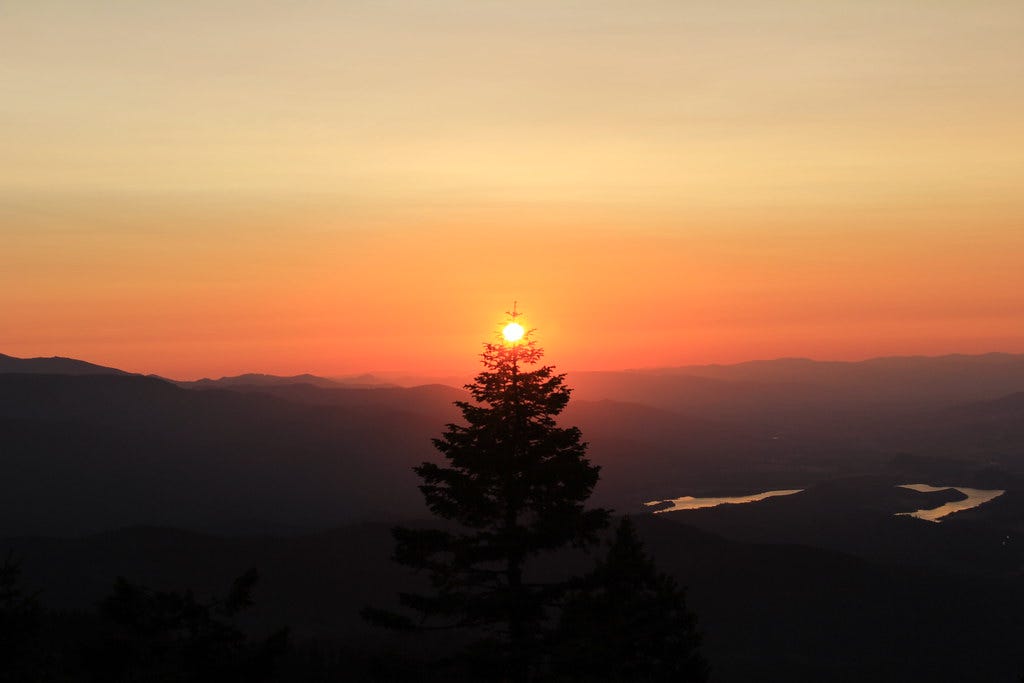RtOW: Conclusion
McCall’s Oregon Family can be re-established. Getting the family back together will challenge us all, but we are more than capable of overcoming tough times.
*Editor’s Note* For the past several Fridays/Saturdays, I’ve posted an excerpt from my book, “Rediscovering the Oregon Way.” This effort started two years ago in the middle of my current role as a graduate school student. I spent weekend mornings doing research, late nights conducting interviews, and spare moments looking for typos. As the title suggests, this is the last excerpt! Thank you to those who have engaged with these chapters.
Read the intro, Read Chapter 1, Read Chapter 2, Read Chapter 3, Read Chapter 4, Read Chapter 5, Read Chapter 6, Read Chapter 7, Read Part I of Chapter 8, Read Part II of Chapter 8, Read Chapter 9.

The Oregon Way grew out of a political culture established in a relatively homogeneous state governed by an even less-diverse leadership class. As has been documented, the resettlers that came to Oregon tended to share genes, many values, and several norms. Those similarities were then translated into social institutions and democratic processes that initiated what later became the fully established Oregon Way.
For many Oregonians, then, the state’s first 100 or so years were marked by high degrees of cultural and ethnic homogeneity. This stability in demographics likely lent some assistance to establishing aspects of the Oregon Way. Of course, this stability was premised upon exclusionary and racist practices (which will be more thoroughly in chapter 13) that diminished diversity of thought and origin.
It follows that Oregon’s transition from a state of resettlers to a state of new residents has had an impact on the nature and strength of its Way. Consider that in 1960, Oregon's population contained just five percent Californians and five percent of people born outside of the United States. By 2012, the percentage of Californians nearly tripled and the percentage of internationally-born Oregonians doubled. From 1990 to 2017, Oregon became a magnet for people looking for opportunity.
With new people came new ideas. Over these decades of population growth (with the exception of a few years spanning the Great Recession) Oregon received an influx of different political cultures that made upholding the consistency of the Oregon Way more difficult. Some of these new folks have been comfortable walking on the Way’s edges, dabbling in going off course, and, depending on who you ask, trampling on the defining characteristics of the Way. In doing so, they have created forks off the Way—new paths toward different values.
These forks may be mistaken for the Way because the “forkers” have so thoroughly marked out this path—it's narrower than a Way, but it's deceptively well-maintained. Think of the fork conveyed and carved by the show Portlandia. Though fictional, the show reinforces conceptions of Oregon as a state driven by Portland, blatantly liberal ideas, and somewhat aloof leaders. Whether Fred Armisen and Keri Brownstein intended to advance this notion of Portland and Oregon is besides the point. Portlanders, Oregonians outside the metro area, and external observers have come to see this sliver of the Oregon Way as the totality of the state’s political culture.

Forks easily occur and foster narrow paths. Such paths are premised on artificially simple policies rather than on hard-to-define values. One interviewee highlighted Roe v. Wade as such a fork. The ruling segmented the Oregon Way into two explicit paths: one for pro-choice advocates and another for pro-life adherents. Yes, the two factions sought shared values, enforced norms, strong social institutions, and open demographic processes...as long as those tenets were cultivated in a pro-life or -choice atmosphere. This apparent bifurcation blinds people from seeing that a third way, the larger Oregon Way, still exists in a realm that transcends the politics of one ruling, one party, and one way of seeing the world.
These forks, grounded in absolute stances on a few policies, appear to be popular but that popularity is a function of the volume of their main proponents more so than the number of people that actually subscribe to such a black and white vision. The loud voices demanding adherence to specific policies often enforce fidelity to said policies through moral or political pressure and their own flawed “Way”. It is true then that forks have norms in addition to shared values but those norms facilitate constriction more so than conversation. Forks also rely on social institutions that have been created from the top down more so than the bottom up. Finally, forks may have democratic processes but those processes are accessible only to those that have demonstrated extreme belief in specific values.
In short, new Oregonians have introduced heterogeneity in nearly every aspect of life. A blast of new air has altered the state’s political atmosphere and many Oregonians are unsure how best to breathe.
Homogeneity has been one of Oregon’s greatest assets and weaknesses. At various times it has united huge numbers of Oregonians to achieve nation-leading policy advances. At other moments, outdated conceptions of what it means to be homogeneous (those based solely on race and ethnicity rather than on a love for Oregon) have hindered the state’s progress and injured many of its communities. Different air, brought in by new residents, has been assumed to be bad air when in reality Oregonians just have to adjust for a different atmosphere.
Socioeconomic homogeneity left Oregon long ago. The state will only become more diverse as time passes. So the maintenance of the Oregon Way requires a new definition of homogeneity, one not premised on race, religion, or ideological righteousness. The homogeneity must come from an identity that overrides the others—being an Oregonian. Without a new source of homogeneity, heterogeneity will create narrower and narrower forks away from a unifying political culture.

The Oregon Way contributes little to the state if it does more to divide than to unite. A trail is nothing if it does not bring a diverse range of people on it and a Way has an even higher standard than merely directing people—it must bring people together and motivate them to take action. Presently, people are neither together nor commonly motivated. A Way is forged with consensus and there are few widely-held views in modern times. Reaching this level of agreement is possible by the serial use of the trail by a variety of individuals all consenting to walk at a similar pace toward a common destination; forks off the Way are usually forged hastily and by just a few people.
McCall’s Oregon Family can be re-established. Getting the family back together will challenge us all to find shared values, to consent to certain norms, to secure the independence of our social institutions, and to participate in and push for open democratic processes.
*************************************************
Send feedback to Kevin:
@kevintfrazier
Keep the conversation going:
Facebook (facebook.com/oregonway), Twitter (@the_oregon_way)
Check out our podcast:




Good excerpt. I’ll have to look for your book. I was raised here and feel like the Oregon Way was simply living a pleasant life and all that that entails. Now it doesn’t feel like that’s a possibility for all, but it could be. That’s sad your email to Dave went unanswered because he passed. It would be great to have conversations like you had before it’s too late. Who would you recommend talking to who embodies the ideals you’re discussing here? Homogeneity isn’t easy because Many folks move here and want to recreate what the saw elsewhere. Maybe we can get back to agree to disagree for the sake of unity as a state.